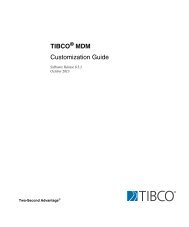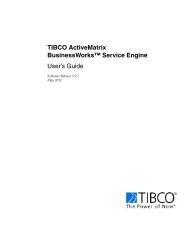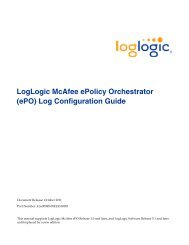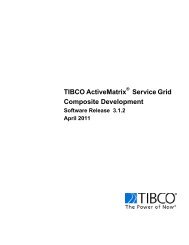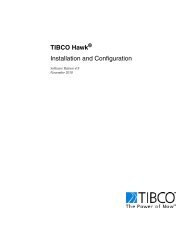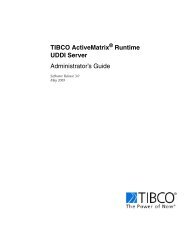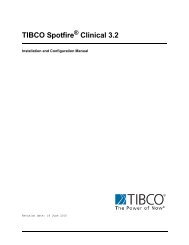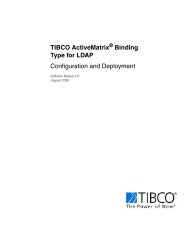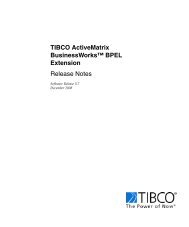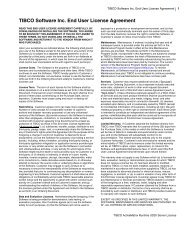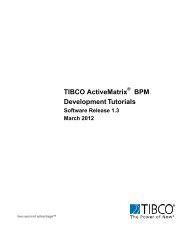TIBCO Spotfire Server 3.2.2 - TIBCO Product Documentation
TIBCO Spotfire Server 3.2.2 - TIBCO Product Documentation
TIBCO Spotfire Server 3.2.2 - TIBCO Product Documentation
Create successful ePaper yourself
Turn your PDF publications into a flip-book with our unique Google optimized e-Paper software.
Authentication and User Directory<br />
8.2.1 LDAP<br />
With this authentication method, users are authenticated with an LDAP server, such as<br />
Microsoft Windows Active Directory or Sun Java System Directory <strong>Server</strong>. To be able<br />
to use this method, you must have a working LDAP server. When users log in using<br />
this method, their usernames are automatically stored in the <strong>Spotfire</strong> <strong>Server</strong> database,<br />
but all other authentication information, such as passwords, resides only on the LDAP<br />
server. LDAP authentication is recommended when an LDAP server exists in the same<br />
network as the <strong>Spotfire</strong> server and you want to use the benefits of not having to add<br />
users manually to the <strong>Spotfire</strong> system. If external authentication is wanted or required,<br />
this is the recommended solution. This method can also be combined with single signon,<br />
using Kerberos keys.<br />
When using LDAP, you need to provide <strong>Spotfire</strong> <strong>Server</strong> with certain information.<br />
Some are selectable in dropdown menus in the configuration console, while others you<br />
have to provide as text. Below is a list of the information needed.<br />
<strong>Server</strong> Type<br />
Protocol<br />
Hostname<br />
Port<br />
Username and Password<br />
Specifies the brand of your LDAP directory server<br />
(dropdown list).<br />
Specifies whether to use LDAP (clear-text) or LDAPS<br />
(encrypted).<br />
The hostname of your LDAP directory server. You can<br />
add more servers (such as more domain controllers<br />
within the same domain)<br />
The port on which the LDAP Directory <strong>Server</strong><br />
communicates on.<br />
Specifies a user that is able to connect to the LDAP<br />
directory server and browse user and group<br />
information.<br />
If you are using a Microsoft LDAP directory, the<br />
username is simply the name of the user.<br />
If you are using a Sun LDAP directory, the username<br />
field must include the user's UID, OU, and DC. For<br />
example<br />
uid=malcolm,ou=captains,dc=serenity,dc=firefly,dc=c<br />
om.<br />
Note: If you do not provide a context (see below), it is<br />
important that you use the fully qualified user name<br />
here.<br />
66 (144) <strong>TIBCO</strong> <strong>Spotfire</strong>® <strong>Server</strong> <strong>3.2.2</strong>



